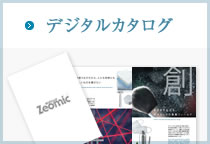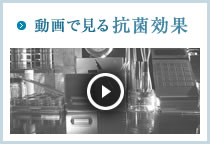Functions of silver-base inorganic antimicrobial agent "Zeomic"
Zeomic antimicrobial function
As more and more emphasis is placed on the peace-of-mind and safety of people, the functions and roles demanded of antimicrobial agents are diversifying. In 1984, Sinanen Zeomic was the first in the world to succeed at commercializing Zeomic, a silver-base inorganic antimicrobial agent. With its superior antimicrobial effect and high safety factor, Zeomic is used in a broad range of fields, from food packaging and home construction materials close to the everyday life of people, and to medical, supporting a safe and comfortable lifestyle.
For richer days and better comfort. We will continue to transmit antimicrobial culture connecting the future to the world.
What is "antimicrobial"?
According to JIS Z 2801(ISO22196), antimicrobial is defined as “A state where the growth of bacteria in a product’s surface is inhibited.”
![]()
To create a condition in which bacteria does not survive easily whereby,even if germs do adhere to the subject,they will only live for a certain period of time or they will be unable to grow. To inhibit the growth of bacteria,rather than kill or decrease their number.
![]()
To completely kill and remove all proliferative bacteria such as microbes. This terminology is mainly used when referring to medical apparatus used in surgery.
![]()
To kill microbes with no defined subject or extent.
![]()
To kill pathogenic organisms,reducing their number to an extent that is not harmful,and making them harmless by removing their infectability.
![]()
To reduce the number of microbes in objects,liquid or restricted spaces and increase cleanliness.
Zeomic's antimicrobial mechanism
Zeomic’s antimicrobial mechanism works by inhibiting the function of enzymes in the metabolic systems of microbes.

- The silver ions from Zeomic impregnate the microbe surface and are then absorbed by the cells through active transfer.
- The silver ions react with several metabolic enzymes within the metabolic system of the microbes.
- The activity of these enzymes is hindered and the growth of microbes is inhibited.
Antimicrobial performance date sheet
Plastics
An agent is defined as effective when the antibacterialactivity value is 2.0 or more (99% or higher death rate).
PP Plate (Test method JIS Z2801:2010)
| Test sample | gram-positive bacteria | gram-negative bacteria | ||
|---|---|---|---|---|
| Viable bacteria count | Antibacterial activity value | Viable bacteria count | Antibacterial activity value | |
| No additives | 9.3×102 | – | 1.3×105 | – |
| 0.5% Zeomic | Not detected | >3.1 | Not detected | >5.3 |
ABS Plate (Test method JIS Z2801:2010)
| Test sample | gram-positive bacteria | gram-negative bacteria | ||
|---|---|---|---|---|
| Viable bacteria count | Antibacterial activity value | Viable bacteria count | Antibacterial activity value | |
| No additives | 8.7×104 | – | 1.8×106 | – |
| 0.5% Zeomic | Not detected | >5.1 | Not detected | >6.5 |
PE Film (Test method JIS Z2801:2010)
| Test sample | gram-positive bacteria | gram-negative bacteria | ||
|---|---|---|---|---|
| Viable bacteria count | Antibacterial activity value | Viable bacteria count | Antibacterial activity value | |
| No additives | 2.9×103 | – | 5.8×105 | – |
| 0.5% Zeomic | Not detected | >3.6 | Not detected | >5.9 |
PE Cutting Board (Test method JIS Z2801:2000E)
| Test sample | After 1 month of use | After 4 years of use | ||
|---|---|---|---|---|
| Viable bacteria count | Antibacterial activity value | Viable bacteria count | Antibacterial activity value | |
| No additives | 4.3×105 | – | 7.1×105 | – |
| 0.5% Zeomic | Not detected | >4.6 | Not detected | >4.8 |
Paint
An agent is defined as effective when the antibacterialactivity value is 2.0 or more (99% or higher death rate).
Acrylic Paint (Test method JIS Z2801:2010)
| Test sample | gram-positive bacteria | gram-negative bacteria | ||
|---|---|---|---|---|
| Viable bacteria count | Antibacterial activity value | Viable bacteria count | Antibacterial activity value | |
| No additives | 1.6×103 | – | 4.1×103 | – |
| 0.5% Zeomic | Not detected | >3.4 | Not detected | >3.8 |
Powder Paint (Test method JIS Z2801:2010)
| Test sample | gram-positive bacteria | gram-negative bacteria | ||
|---|---|---|---|---|
| Viable bacteria count | Antibacterial activity value | Viable bacteria count | Antibacterial activity value | |
| No additives | 4.4×104 | – | 3.1×105 | – |
| 0.5% Zeomic | Not detected | >4.8 | Not detected | >5.6 |
Fiber
Polyester cotton knead master batch(JIS L 1902: 2002)
| Test sample | gram-positive bacteria | |
|---|---|---|
| Viable bacteria count | Bactericidal activity value | |
| Untreated | 2.1×106 | – |
| Product containing 2.0% Zeomic | Not detected | >2.93 |
| Zeomic: 2.0% Cotton = 50/50 | Not detected | >2.93 |
Cotton (Test method JIS L1902:2008)
| Test sample | gram-positive bacteria | gram-negative bacteria | ||
|---|---|---|---|---|
| Viable bacteria count | Bacteriostatic activity | Viable bacteria count | Bacteriostatic activity | |
| Untreated | 2.5×106 | – | 2.1×107 | – |
| 0.5% Zeomic | Not detected | >5.09 | Not detected | >6.02 |
PP non-woven fabric post-processed product (JIS L 1902:2002)
| Test sample | gram-positive bacteria | gram-negative bacteria | ||
|---|---|---|---|---|
| Viable bacteria count | Bactericidal activity value | Viable bacteria count | Bactericidal activity value | |
| Untreated | 3.7×106 | – | 5.5×107 | – |
| Product processed with 0.5g/m2 Zeomic | Not detected | >3.11 | Not detected | >3.11 |
Zeomic's deodorizing function
By inhibiting the growth of bacteria,Zeomic also inhibits the gases generated by the metabolisms of bacteria,thus is anticipated to have a deodorizing effect.








